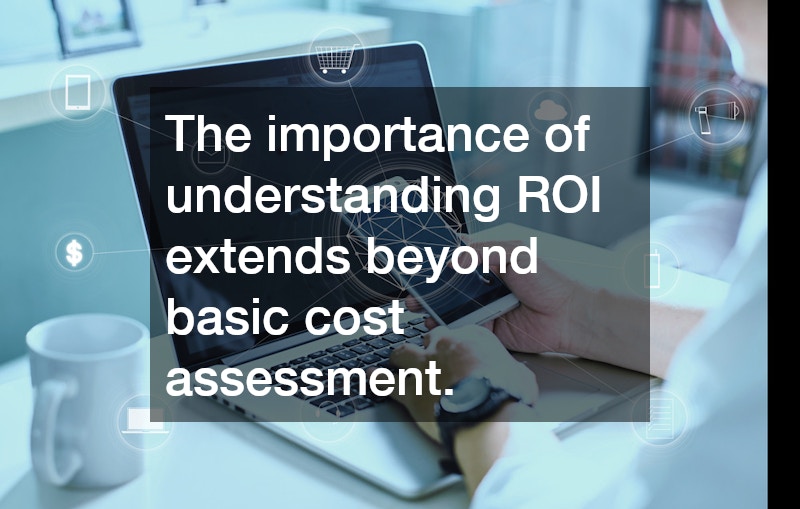
In today’s fast-paced digital landscape, businesses are investing more resources into digital marketing efforts than ever before. However, it’s vital to ensure that these resources deliver tangible benefits to justify the investment. This is where understanding the return on investment (ROI) of your digital marketing efforts becomes critical.
What Is ROI in Digital Marketing?
Return on Investment on digital marketing is a metric that measures the profitability of marketing campaigns relative to their cost. It helps businesses assess whether their marketing strategies are effective and generating the desired financial returns.
By calculating ROI, companies can make informed decisions about where to allocate their marketing budgets for maximum impact.
To calculate the ROI of digital marketing, you need to measure the revenue generated from marketing activities and deduct the associated costs. This involves connecting digital efforts with actual sales and profit data to quantify success. By using precise data and analytics, marketers can track the performance of various digital channels, like social media, SEO, and email marketing.
The importance of understanding ROI extends beyond basic cost assessment. It allows businesses to identify successful campaigns and replicate best practices across different segments. Additionally, recognizing campaigns with lower ROI can help in adapting strategies to reduce wasteful spending and optimize future campaigns for better results.
How to Measure ROI on Digital Marketing?
Measuring ROI on digital marketing involves setting clear objectives, tracking performance metrics, and analyzing outcomes. It starts with defining what success looks like for your business in terms of awareness, engagement, lead generation, or direct sales. Having a clear understanding of goals aids in selecting appropriate performance indicators for measurement.
Utilizing analytical tools and software is critical in gathering data and evaluating the ROI of marketing activities. These tools capture essential metrics such as conversion rates, customer acquisition costs, and lifetime value, providing a comprehensive outlook on the effectiveness of digital marketing strategies. By effectively interpreting these analytics, businesses can gain insights into both the strengths and weaknesses of their existing campaigns.
Once the data is available, it’s important to use it to assess the profitability of each marketing channel. This analysis helps in identifying which investments are yielding acceptable returns and which ones might require adjustments. Ultimately, the aim is to fine-tune marketing efforts by reallocating resources toward the most lucrative avenues.
Improving ROI through Effective Strategies
Improving the ROI on digital marketing requires the implementation of effective and targeted strategies. One approach is through audience segmentation, which involves tailoring marketing content to specific groups based on demographics, interests, and behaviors. This personalized strategy can enhance engagement and drive superior results, thereby increasing ROI.
Additionally, optimizing marketing channels is crucial to improving the profitability of digital campaigns. By focusing on high-performing platforms and optimizing content according to customer preferences, businesses can enhance reach and conversion rates. A well-optimized strategy not only improves engagement but also contributes to a lower customer acquisition cost, boosting overall ROI.
Regularly reviewing and refining marketing strategies is necessary for sustained growth and improved returns. Incorporating feedback mechanisms and testing alternative approaches can provide invaluable insights for continuous improvement. The key is to stay adaptable and responsive to market changes, channel shifts, and evolving consumer expectations to optimize the ROI of digital marketing efforts.
Challenges in Measuring ROI
Despite the importance of measuring ROI, there are significant challenges associated with this process in digital marketing. One of the major obstacles is attributing revenue directly to specific digital marketing efforts, often due to the complex, multi-touchpoint nature of customer journeys. Accurately identifying the contribution of individual marketing channels can be complex without the right tools and frameworks.
Another challenge is ensuring the quality and accuracy of data collected across digital platforms. Variances in reporting standards, user privacy regulations, and technical limitations can all impact the reliability of the data. Ensuring data integrity through consistent practices and reliable tools is essential for accurate ROI calculations.
Lastly, the rapidly changing digital landscape presents its own set of challenges. Emerging technologies and shifting consumer behaviors can quickly alter the effectiveness of existing strategies, calling for a dynamic approach to ROI assessment. Businesses must remain vigilant, adapting their methods to account for these changes and maintaining an accurate understanding of their marketing performance.
.
